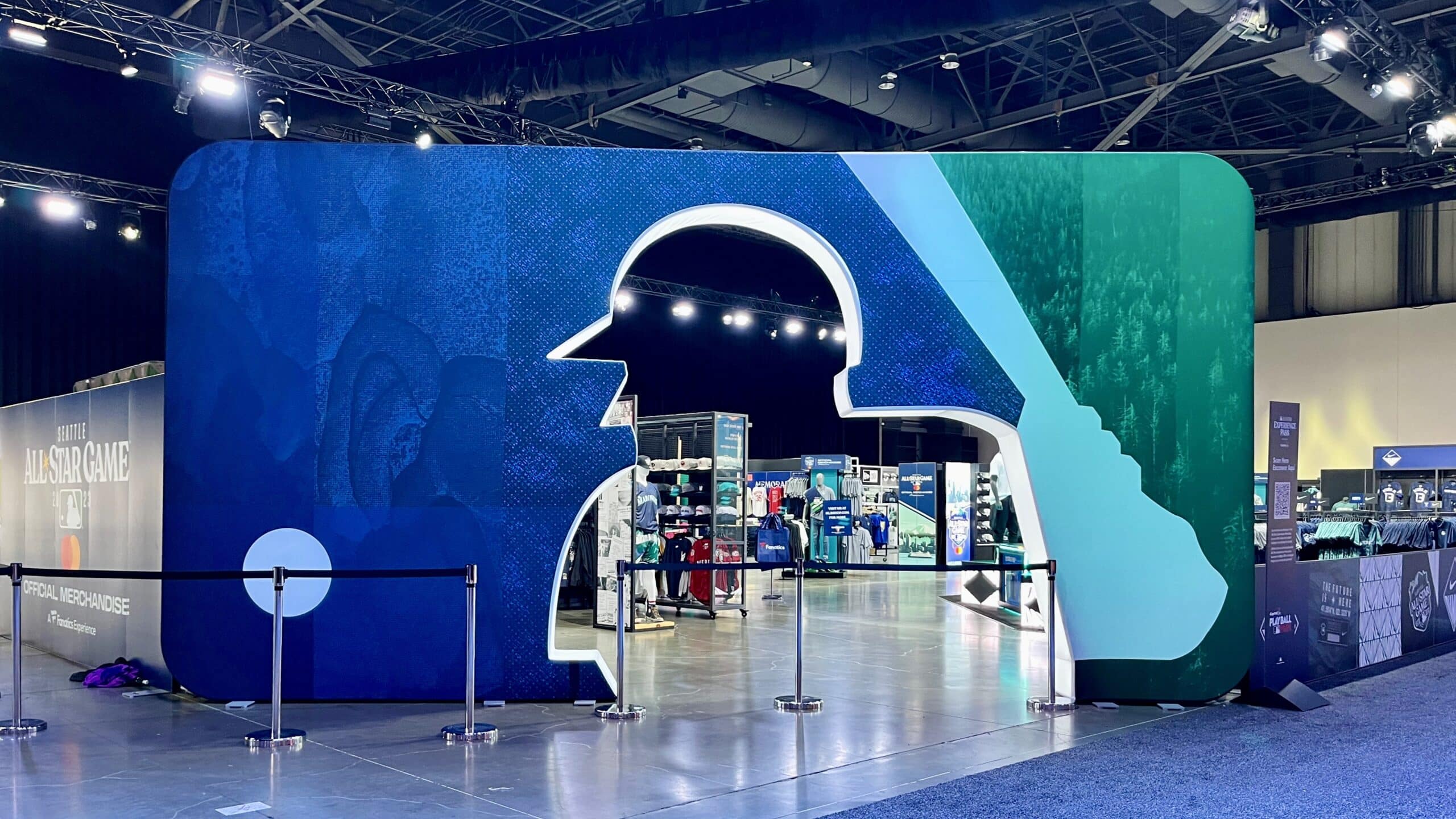[ad_1]
 The vast majority of high-profile big tech whistleblowers in recent years have been women. Elke Meitzel/Image Source via Getty Images
The vast majority of high-profile big tech whistleblowers in recent years have been women. Elke Meitzel/Image Source via Getty Images
A number of high-profile whistleblowers in the technology industry have stepped into the spotlight in the past few years. For the most part, they have been revealing corporate practices that thwart the public interest: Frances Haugen exposed personal data exploitation at Meta, Timnit Gebru and Rebecca Rivers challenged Google on ethics and AI issues, and Janneke Parrish raised concerns about a discriminatory work culture at Apple, among others.
People are also reading…
Many of these whistleblowers are women – far more, it appears, than the proportion of women working in the tech industry. This raises the question of whether women are more likely to be whistleblowers in the tech field. The short answer is: “It’s complicated.”
For many, whistleblowing is a last resort to get society to address problems that can’t be resolved within an organization, or at least by the whistleblower. It speaks to the organizational status, power and resources of the whistleblower; the openness, communication and values of the organization in which they work; and to their passion, frustration and commitment to the issue they want to see addressed. Are whistleblowers more focused on the public interest? More virtuous? Less influential in their organizations? Are these possible explanations for why so many women are blowing the whistle on big tech?
To investigate these questions, we, a computer scientist and a sociologist, explored the nature of big tech whistleblowing, the influence of gender, and the implications for technology’s role in society. What we found was both complex and intriguing.
Narrative of virtue
Whistleblowing is a difficult phenomenon to study because its public manifestation is only the tip of the iceberg. Most whistleblowing is confidential or anonymous. On the surface, the notion of female whistleblowers fits with the prevailing narrative that women are somehow more altruistic, focused on the public interest or morally virtuous than men.
Consider an argument made by the New York State Woman Suffrage Association around giving U.S. women the right to vote in the 1920s: “Women are, by nature and training, housekeepers. Let them have a hand in the city’s housekeeping, even if they introduce an occasional house-cleaning.” In other words, giving women the power of the vote would help “clean up” the mess that men had made.

Timnit Gebru called out ethical issues in Google’s AI efforts when she was a computer scientist at the company. (AP Photo/Jeff Chiu)
More recently, a similar argument was used in the move to all-women traffic enforcement in some Latin American cities under the assumption that female police officers are more impervious to bribes. Indeed, the United Nations has recently identified women’s global empowerment as key to reducing corruption and inequality in its world development goals.
There is data showing that women, more so than men, are associated with lower levels of corruption in government and business. For example, studies show that the higher the share of female elected officials in governments around the world, the lower the corruption. While this trend in part reflects the tendency of less corrupt governments to more often elect women, additional studies show a direct causal effect of electing female leaders and, in turn, reducing corruption.
Experimental studies and attitudinal surveys also show that women are more ethical in business dealings than their male counterparts, and one study using data on actual firm-level dealings confirms that businesses led by women are directly associated with a lower incidence of bribery. Much of this likely comes down to the socialization of men and women into different gender roles in society.
Hints, but no hard data
Although women may be acculturated to behave more ethically, this leaves open the question of whether they really are more likely to be whistleblowers. The full data on who reports wrongdoing is elusive, but scholars try to address the question by asking people about their whistleblowing orientation in surveys and in vignettes. In these studies, the gender effect is inconclusive.
In the technology field, there is an additional factor at play. Women are under-represented both in numbers and in organizational power. The “Big Five” in tech – Google, Meta, Apple, Amazon and Microsoft – are still largely white and male.
Women currently represent about 25% of their technology workforce and about 30% of their executive leadership. Women are prevalent enough now to avoid being tokens but often don’t have the insider status and resources to effect change. They also lack the power that sometimes corrupts, referred to as the corruption opportunity gap.

Frances Haugen testified before Congress about how Meta, then called Facebook, put profits ahead of the public interest. Earlier she had leaked internal company documents to show that Meta was aware of the harm it was causing. (AP Photo/Alex Brandon, File)
In the public interest
Marginalized people often lack a sense of belonging and inclusion in organizations. The silver lining to this exclusion is that those people may feel less obligated to toe the line when they see wrongdoing. Given all of this, it is likely that some combination of gender socialization and female outsider status in big tech creates a situation where women appear to be the prevalent whistleblowers.
It may be that whistleblowing in tech is the result of a perfect storm between the field’s gender and public interest problems. Clear and conclusive data does not exist, and without concrete evidence the jury is out. But the prevalence of female whistleblowers in big tech is emblematic of both of these deficiencies, and the efforts of these whistleblowers are often aimed at boosting diversity and reducing the harm big tech causes society.
More so than any other corporate sector, tech pervades people’s lives. Big tech creates the tools people use every day, defines the information the public consumes, collects data on its users’ thoughts and behavior, and plays a major role in determining whether privacy, safety, security and welfare are supported or undermined.
And yet, the complexity, proprietary intellectual property protections and ubiquity of digital technologies make it hard for the public to gauge the personal risks and societal impact of technology. Today’s corporate cultural firewalls make it difficult to understand the choices that go into developing the products and services that so dominate people’s lives.
Of all areas within society in need of transparency and a greater focus on the public interest, we believe the most urgent priority is big tech. This makes the courage and the commitment of today’s whistleblowers all the more important.
Francine Berman is a Trustee of the Sloan Foundation and a Board member of the Marconi Society.
Jennifer Lundquist does not work for, consult, own shares in or receive funding from any company or organization that would benefit from this article, and has disclosed no relevant affiliations beyond their academic appointment.
How social media rebuilt advertising
How social media rebuilt advertising

Just a few years into the 21st century, social media took the world by storm with Facebook emerging in 2004, following predecessors like Friendster and Myspace. YouTube became a thing in 2005, followed shortly after by Twitter. Instagram made its debut in 2010, and TikTok currently serves as inspiration for many burgeoning social platforms with its high engagement and large-scale profits. In fact, TikTok surpassed Google in 2021 as the most popular website.
Instagram is perhaps the social media platform most well-known for introducing the concept of the influencer. What an influencer exactly is tends to be loosely defined, as it requires neither fame nor influence in and of itself. Instead, part of the job description is having the tenacity to project a personal image out into the digital world and in so doing, affect the behavior (and spending patterns) of followers.
Influencers post and share their daily lives through photo and video posts as a way to connect with their followers and inspire them to learn about the products they use or recommend. In 2014, Instagram introduced its paid advertisements feature, which allowed brands to partner with various influencers to sell products to consumers with just a tap of a finger. The influencer gets paid to share and post the product on their platform. It was, from the very start, a win-win situation for both parties.
Very quickly, the days when ad agencies needed to plan expensive photo shoots and buy placements in magazines to sell a product were disappearing. Other long-held rules of the advertising world were also rapidly becoming passe, such as trying to forecast consumer trends several months ahead and engaging marketing think-tanks to develop a “character” (think Tony the Tiger or Geico’s gecko) to make a brand more personally identifiable to the average consumer. The advertising game has now evolved, with consumers becoming an active driving force behind a product. To get a more detailed look at how and why this has occurred, Planoly analyzed social media, advertising, and consumer trends to highlight how advertising has evolved from catchy slogans, jingles, and celebrity endorsements to the digital age of social media influencers and online metrics.

Consumers have shifted to social media, especially Facebook, YouTube, Instagram, and TikTok

Social media has evolved from being a popular pastime for people to connect with others and share personal news to being a marketing tool that influences trends, behavior, and cultural positioning for individuals and companies alike. Consumers who use social media have options to purchase products from various platforms, whether it’s purchasing new or used items on Facebook Marketplace or buying a product from an Instagram boutique. In 2021, over 47% of U.S. social media users aged 16-34 made an online purchase directly from Instagram, and nearly 51% said they made purchases on Facebook. Experts predict that Gen Z and millennials will be the primary growth drivers of social commerce, contributing 62% of spending by 2025 to a sector expected to reach $1.2 trillion.
Social media highlighted the power of influencer marketing and advertising

Influencers are as much social media personalities as they are entrepreneurs. Considered by mainstream consumers as significant in the social media space—notably Instagram and TikTok—influencers can leverage their online network to drive purchasing decisions, especially when it comes to marketing and advertising for a company or organization. Major brands are aware of the value of influencers and influencer marketing, and in 2022 are projected to spend $15 billion in this space. TikTok’s explosive growth has caught the attention of even more marketing agencies that are willing to participate in sponsored TikTok collaborations. The digital expansion continues to include retailers online, which means more potential partnerships for brands and, of course, more opportunity for influencers.
Consumer spending has changed to be more online

The ongoing COVID-19 pandemic has perhaps permanently changed the course of consumer spending, as evidenced by a 9.4% increase in e-commerce spending during the winter holiday months of 2020 compared to 2021. In addition to increasing their online spending, consumers have forced a shift in brand loyalty with 75% of shoppers around the world indicating that they’ve tried different shopping methods and explored brands they’ve never used before. Social media purchases alone are expected to reach $1.2 trillion by 2025, an increase from $492 billion in 2021. The most common items sold on social media platforms are clothing, electronics, and home decor.
Advertisers have changed the way they measure success

Influencer marketing has seen a rise in recent years with many businesses now having an influencer-oriented budget included in their market strategy. Businesses employ ‘audience reach’ data to measure the success of influencer programs, which shows the number of views an influencer gets on a piece of content. Engagement can be analyzed through likes, shares, and comments, while ‘conversion’ tracks any action a user makes after viewing an influencer’s content on social media, such as clicking to a product’s website. Some other ways conversions can be calculated include when a viewer makes a purchase, completes an online form, or downloads an app after reviewing content that was posted on the page.
Advertisers have had to shift their priorities

Advertisers have definitely had to pivot throughout the digital age not just in how they create content but how they spend their marketing dollars. Budgets have shifted from traditional media (such as print and TV ads and billboards) to digital media — and when you add the impact of the pandemic to the mix, it’s clear that priorities have narrowed. During the pandemic, consumer behavior rapidly changed and advertisers had to keep up. As contactless payment increased, advertisers had to conform to more digital approaches.
Social media has also changed the type of content seen in marketing or advertising campaigns

Let’s flashback to pre-social media days when advertising was portrayed through catchy commercial jingles on television and radio, brand characters were created around cereal products, and flashy photos of celebrities were sprawled across glossy magazines and catalogs. It was a time when consumers were more in the spectator seat; the function of ads was to sell to the passive consumer. Fast forward to today and consumers are becoming more than just onlookers. In order to build consumer trust, brands are now partnering with people whom they would have traditionally targeted as a consumer. The content seen in marketing and advertising is different now with consumers using their own platforms, creating Tik Tok and Instagram videos from their own living room, and putting their own form of advertising content out into the digital world just by typing #ad.
Content is more accessible and available to people all around the world

Social media has significantly changed the way we communicate, making it easy to find out more about interests, hobbies, and products instantly at our fingertips. According to the Pew Research Center, 86% of Americans get their news from a digital device. Social media, which is free of charge, has allowed more people to share their voices and opinions with a much wider audience. Before, news and information came from traditional vehicles of television, magazines, and newspapers, which were gatekeepers deciding who could be seen and heard. Now, anyone with a social media account can send out information. One message can be sent to a mass amount of people with just a click, which is highly beneficial for marketing agencies that wish to get the word out about a new product.
Social media has put an emphasis on building real-time engagement with consumers

It’s crucial for businesses to establish a social media presence and create a strategy for responding to customers’ questions or concerns in a timely manner. Human interaction online is fundamental to real-time engagement and lends itself to brand loyalty and trust. If an audience doesn’t feel a meaningful connection to a brand beyond a purchase, they may switch to another competitor. Social media allows brands real-time insight into their customers’ preferences—they can track which images are most popular for the brand’s social posts and what words or phrases are a hit. In the era of instant accessibility, research trends suggest that social media users expect companies to respond to their inquiries or comments within 24 hours.
Advertising industry keeps reaching record spending levels (and also increasing revenue)

The rise of e-commerce powerhouses such as Amazon, as well as evergreen hubs like eBay, has pushed brands toward more and more advertising in an effort to increase retail sales across the board. The advertising industry globally saw huge gains in 2021, especially in digital media with social media being a driving force. The U.S. ad market is estimated to surpass $300 billion in spending in 2022, with the global market projected to be $700 billion. While traditional advertising and media such as television and radio pose a varied outlook when it comes to growth, ad agency Zenith predicts that digital media ad spend will crest $200 billion in 2022.
Results of advertising campaigns can be quickly determined

These days, it is easier than ever before for advertising agencies and influencers to measure success in real-time. Influencers and marketing agencies can determine the success of a marketing campaign within a month or less through detailed metrics such as user engagement, amount of shares, likes and reach, and conversions. Although engagement doesn’t have a monetary value, it’s a valuable metric in determining brand awareness among their target audience. Measures of success, as well as the ability to figure out what’s not working, can be easily tracked through the number of followers gained or lost, as well as click count. Businesses generally establish a time period when key performance indicators are measured such as monthly or quarterly.
This story originally appeared on Planoly and was produced and distributed in partnership with Stacker Studio.
[ad_2]
Source link







